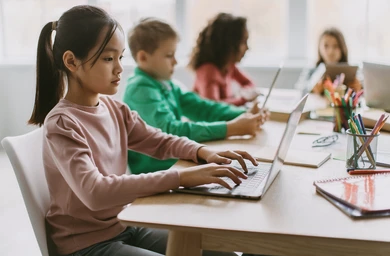As we march further into the 21st century, the future of education is becoming increasingly intertwined with technology. The traditional classroom setup is evolving, giving way to tech-driven environments that promise to enhance learning experiences and outcomes.
Technological Advancements in Education
One of the most significant impacts of technology in the classroom is the transformation of teaching methods. Interactive whiteboards, tablets, and e-learning platforms have replaced chalkboards and textbooks, making learning more interactive and engaging. These tools cater to different learning styles, ensuring that all students can benefit.
Enhanced Student Engagement
Gamification is another trend shaping the future of education. By incorporating game elements into lessons, educators can make learning more enjoyable and motivating. This approach not only boosts engagement but also improves retention and understanding of complex concepts.
Personalized Learning Experiences
Adaptive learning technologies are revolutionizing personalized education. These systems analyze individual student performance and tailor content to meet their specific needs. This personalized approach ensures that students can learn at their own pace, maximizing their potential.
Access to Global Resources
Technology has also broken-down geographical barriers in education. Students now have access to a wealth of online resources, including virtual libraries, online courses, and international collaborations. This global access broadens their horizons and fosters a more inclusive learning environment.
Preparing for the Future Workforce
Incorporating technology into the classroom is crucial for preparing students for the future workforce. As industries continue to evolve, digital literacy becomes increasingly important. By integrating technology into education, students acquire essential skills that will serve them well in their future careers.
Challenges and Considerations
While the benefits are clear, integrating technology in the classroom comes with challenges. Ensuring equitable access to devices and the internet, maintaining student data privacy, and providing adequate training for teachers are essential considerations that need to be addressed.
Conclusion
The future of education lies in the seamless integration of technology in the classroom. By embracing these advancements, we can create more dynamic, engaging, and effective learning environments that prepare students for a rapidly changing world. The journey has just begun, and the possibilities are endless.
Who we are: Funded.com is a platform that is A+ BBB accredited over 10+ years. Access our network of Angel Investors, Venture Capital or Lenders. Let us professionally write your Business Plan.





 Rss Feed
Rss Feed


